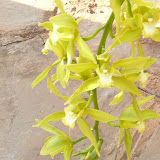
Every garden should have some colour and planting a few flower beds will be most rewarding.
These flowers can be planted in Zimbabwe during March:
Alyssum, Anemone, Antirrhinum, Blue lace, Browallia, Calendula, Campanula, Candytuft, Canna, Cineraria, Clarkia, Coreopsis, Cornflower, Delphinium, Dianthus, Eschscholtzia, Foxglove, Fushia, Gaillardia, Geum, Gypsophila, Helichrysum, Heuchera, Hunnemannia, Larkspur, Leptosyne, Linum, Lupin, Matricaria, Michaelmas daisey, Mignonette,Mina Lobata, Myosotis, Nemophilia, Pansy, Pentstemon, Phlox, Polyanthus, Poppy, Pyrethrum, Ranunculus, Scabious, Schizanthus, Statice, Stocks, Sweet pea, Sweet Sultan, Viola, Violet, White Lace.
With a list this long i am sure you will find something to suit your garden theme.
good planting!








































